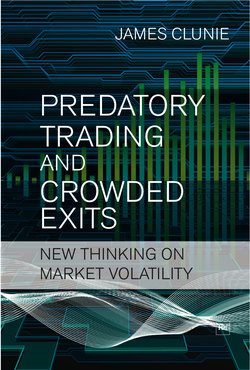Читать книгу Predatory Trading and Crowded Exits - James Clunie - Страница 17
На сайте Литреса книга снята с продажи.
More complicated worlds
ОглавлениеSo far, we have considered a very simple world, populated only by informed arbitrageurs and uninformed noise traders. And yet this simple world has already led to a better understanding of arbitrage and risk, and has allowed for the development of bubbles.
What happens if we add in other market actors?
One example of a more complicated model is provided by De Long et al. (1990) who create a model with two assets: cash and stock. There are three types of traders: positive feedback traders, fundamental-versus-price-comparator investors and utility-maximising informed rational speculators.
Positive feedback traders simply buy stock after its price has risen, and sell after its price falls. They are associated with price momentum trading or trend following, stop-loss orders (selling a risky asset after a price drop below some pre-defined level), dynamic hedging (selling a risky asset after a price fall, and vice versa), and the liquidation of positions by investors unable to meet margin calls.
Fundamental-versus-price comparator investors are simply disciplined ‘value’ investors. They acquire stock when it trades below its assumed fundamental value and sell stock when it rises above its assumed fundamental value.
Informed rational speculators, on learning some news about a security, not only trade in response to the news, but also trade additionally in anticipation of the positive feedback traders’ response to the rational speculator’s trading. Stock price movements in response to news thus become exaggerated.
The model reveals patterns of stock prices that are consistent with the empirical evidence of positive serial correlation of returns over periods of weeks or months (i.e. price momentum), followed by mean reversion over several years. Such patterns could also be obtained without anticipatory trading by rational speculators, so long as positive feedback traders operate in the market. The authors argue that in the presence of positive feedback traders, it might be rational for investors to “jump on the bandwagon and not buck the trend” when prices are trending. This is exactly the sort of behaviour that Brunnermeier and Nagel found amongst hedge funds around the time of the TMT stock bubble.
